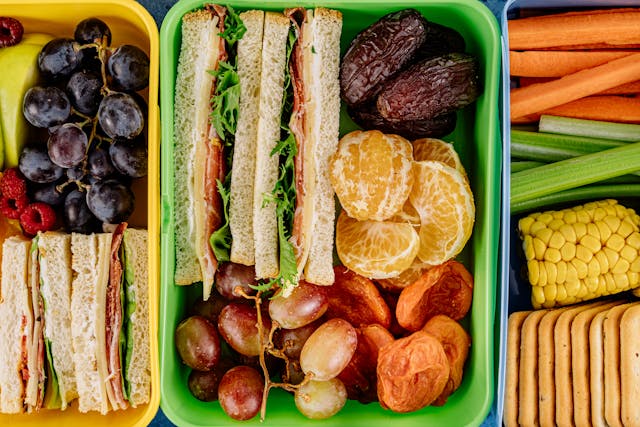Home » News » 2024 » September
News Brief
Sept. 9, 2024 |
By: Shauneen Miranda - Missouri Independent
Despite opt-outs by GOP states, debut of kids’ summer food program seen as a success

By Shauneen Miranda - Missouri Independent
A U.S. Department of Agriculture initiative to feed hungry kids during the long summer months is mostly winding down, with advocates calling it a success despite some hiccups — and the federal government and many states are already working to bring the permanent program back in 2025.
The Summer Electronic Benefit Transfer Program — or Summer EBT — has popped up in 37 states, the District of Columbia and multiple territories and tribal nations this year. Advocates say that despite the program’s fair share of challenges, especially given its first year of implementation, the program emerged as an important resource in the fight against kids’ summer hunger.
Summer EBT, also known as SUN Bucks, provides low-income families with school-aged children a grocery-buying benefit of $120 per child. Children are automatically enrolled in Summer EBT if already enrolled in the Supplemental Nutrition Assistance Program, or SNAP; Temporary Assistance for Needy Families, known as TANF; or the Food Distribution Program on Indian Reservations, per the USDA.
Students might also be automatically enrolled if their school offers the National School Lunch Program or School Breakfast Program and their family qualifies for free or reduced-price school meals, according to the USDA. Most states’ deadlines to apply for the benefit this summer have already passed, and many have already issued the benefit for the summer months.
Allan Rodriguez, a spokesperson for the USDA, said it’s too early to say just how many children have been served through the program so far this summer, but based on the participating states, territories and tribes, an estimated 21 million children are eligible to receive the benefits.
‘Critical support to families’
Kelsey Boone, senior child nutrition policy analyst at the Food Research & Action Center, told States Newsroom that “like any new program, there are challenges with Summer EBT.”
The national nonprofit works to reduce poverty-related hunger through research, advocacy and policy solutions.
“That has included tight implementation timelines, logistical complexities and the need to raise awareness among eligible families,” Boone said.
Despite those challenges, Boone said the program is “definitely worth it” and “provides critical support to families by ensuring children have access to nutritious foods during the summer months, bridging the gap when school meals are unavailable.”
Boone said “we are still in the midst of implementation, so there aren’t hard statistics on how the programs are really rolling out at this point.”
She added that “some states have had to return to USDA and ask for … higher amounts of benefits, and that is due to the fact that they are streamline certifying, or automatically giving benefits to more students than they expected, and that is a very big positive for the streamlined certification process.”
Boone noted that some states have been delayed in issuing the benefits, “which means some families will not be receiving benefits until September or even October or November.”
Still, Boone said that despite the importance of receiving the benefits during crucial summer months when school meal programs are not an option, “it is also going to be helpful no matter what.”
Over a dozen states opted out
But 13 states — all with Republican governors — chose not to partake in the program this year, including Alabama, Alaska, Florida, Georgia, Idaho, Iowa, Mississippi, Oklahoma, South Carolina, South Dakota, Texas, Utah and Wyoming. Multiple tribal nations in Oklahoma are participating despite the state opting out.
Rodriguez said the department expects that even more states and tribes will provide SUN Bucks next year.
States have until Jan. 1 to submit a notice of intent if they plan to participate in Summer EBT for 2025, according to the USDA. Alabama has already allocated millions of dollars in funding for the program next summer.
“We recognize that standing up a new program in a very short time period is no easy task,” Rodriguez said, adding that “potential challenges may include making systems changes, identifying sufficient staff, and securing financial resources to cover program administration, particularly (states’) responsibility for covering 50% of the administrative costs associated with operating the program.”
The USDA “is committed to working closely with all states, U.S. territories, and eligible tribes to support our shared goal of ensuring children have access to critical nutrition in the summer months through SUN Bucks,” Rodriguez added.
Justin King, policy director at Propel — a financial technology company helping low-income Americans track Electronic Benefit Transfer balances, like Summer EBT, through an app — said “there’s a lot of frustration and disappointment among folks who feel left out because their state has chosen not to participate this year.”
The company, which has partnered with the Biden administration, serves more than 5 million households each month.
King said “the big takeaway from looking at Summer EBT is that while there might be inevitable hiccups and challenges, Summer EBT can work, and it does make a difference for the households that it serves.”
“The comments that we’ve gotten from households who’ve received the benefit this year are overwhelmingly positive about it making a real difference in their ability to keep their kids healthy and fed in summertime.”
![]()






